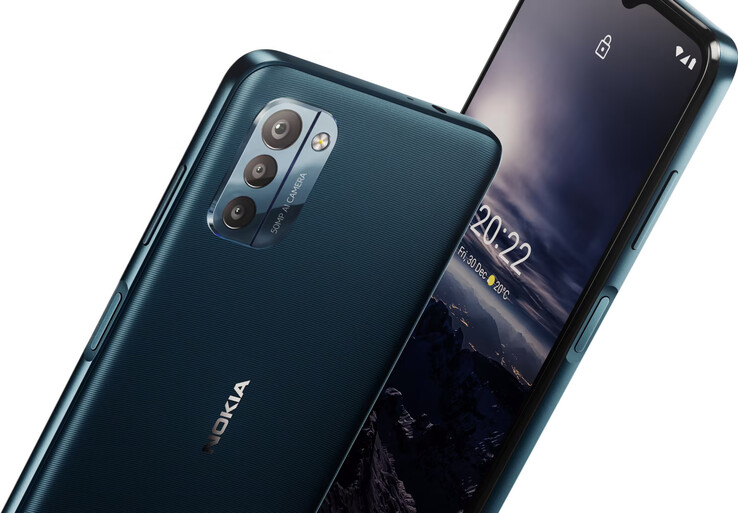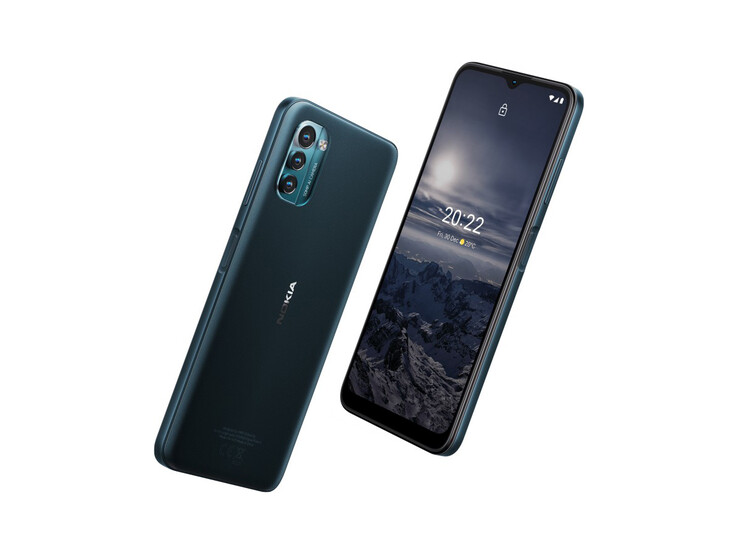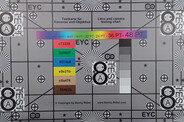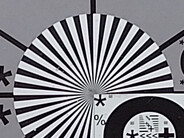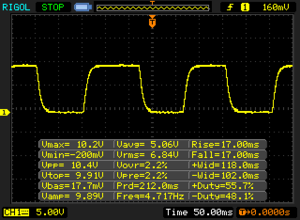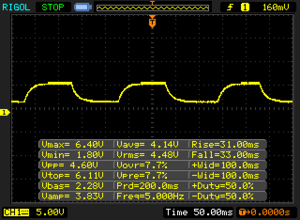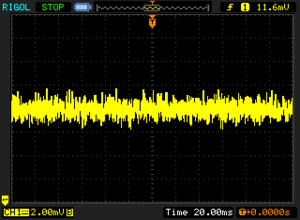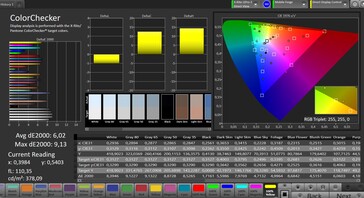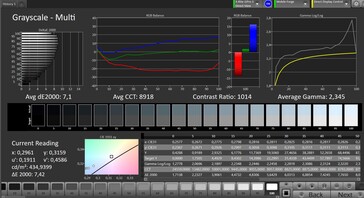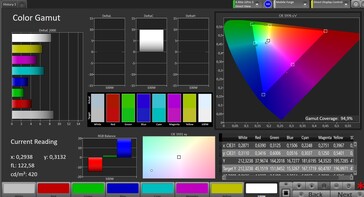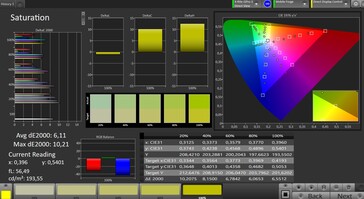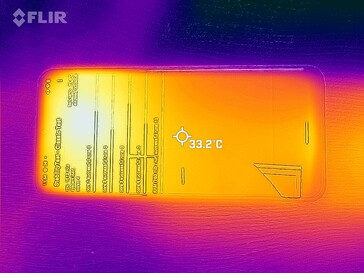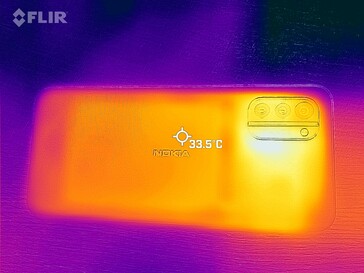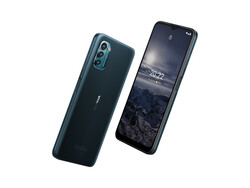Nokia G21 Smartphone Review: Slim 4G phone convinces with bright screen
Possible competitors in comparison
Rating | Date | Model | Weight | Drive | Size | Resolution | Price |
|---|---|---|---|---|---|---|---|
| 78.5 % v7 (old) | 03 / 2022 | Nokia G21 T7200 (T606), Mali-G57 MP1 | 190 g | 64 GB eMMC Flash | 6.50" | 1600x720 | |
| 73.8 % v7 (old) | 01 / 2022 | Xiaomi Redmi 9C Helio G35, PowerVR GE8320 | 196 g | 128 GB eMMC Flash | 6.53" | 1600x720 | |
| 78.9 % v7 (old) | 01 / 2022 | Motorola Moto G31 Helio G85, Mali-G52 MP2 | 181 g | 64 GB eMMC Flash | 6.40" | 2400x1080 | |
| 74.9 % v7 (old) | 12 / 2021 | Samsung Galaxy A12 Exynos SM-A127F Exynos 850, Mali-G52 MP1 | 205 g | 64 GB eMMC Flash | 6.50" | 1600x720 | |
| 76.4 % v7 (old) | 07 / 2021 | Nokia G20 Helio G35, PowerVR GE8320 | 197 g | 64 GB eMMC Flash | 6.50" | 1600x720 |
Case and features: Stylish polycarbonate
With the Nokia G21, the manufacturer has a cheap mid-range cell phone on offer. Nokia particularly advertises the long update period and a slimmer casing as the phone's strengths.
The G21 actually seems thinner than the predecessor, the Nokia G20, but the camera module protrudes clearly from the casing. The design has become a bit more angular compared to the G20, but the polycarbonate chassis still sports a stylish design. A light line pattern runs across the back, which is available in dark Nordic Blue or Dusk, a brown color variant. The smartphone is sturdily built and cleanly manufactured.
64 GB or 128 GB of mass storage is available, and the price difference between the two is approximately 20 Euros. Two SIM slots and a dedicated microSD reader are on board. The latter reads memory cards very quickly and also proves to be at least on class level in the copy test. It is also pleasing that Nokia did not skimp on the NFC chip, so you can use mobile payment services or other apps that support near field communication.
| SD Card Reader - average JPG Copy Test (av. of 3 runs) | |
| Samsung Galaxy A12 Exynos SM-A127F (Angelbird V60) | |
| Average of class Smartphone (5.72 - 58.9, n=69, last 2 years) | |
| Xiaomi Redmi 9C (Angelbird V60) | |
| Nokia G21 (Angelbird V60) | |
| Motorola Moto G31 (Angelbird V60) | |
| Nokia G20 (Angelbird V60) | |
Cross Platform Disk Test (CPDT)
Communication, software and, operation: Nokia with Android 11
The Nokia G21 is only a 4G phone. That being said, there are only a handful of 5G smartphones that can be found for under 200 Euros. The frequency diversity is limited to the bare essentials, so you might have difficulties accessing the mobile Internet when traveling to more distant countries. The reception is mediocre in our sample and does not come close to high-end smartphones indoors or outdoors, but it is sufficient for everyday use.
Having said that, the Nokia G21 is up-to-date and comes with Wi-Fi 5. Thus, our test device receives and transmits significantly faster than most comparison devices in our test when tested with our reference Asus GT-AXE11000 router — only the Motorola Moto G31 can keep up here.
Nokia relies on a pure, stock Android 11 UI. The manufacturer promises Android 12 and another year of operating system updates as well as three years of security updates from market launch, probably until February 2025. Motorola's Moto G31 offers an equally long support period with security patches. It is often difficult to get a concrete update promise for inexpensive smartphones, so the Nokia G21 can be rewarded here.
The touchscreen with a sampling rate of up to 180 Hz and a refresh rate of up to 90 Hz makes daily operation pleasantly smooth. A fingerprint sensor, which is installed in the standby button, is found on the casing's right. Fingerprint recognition is quite reliable and the smartphone is unlocked after a short delay. Face recognition can also be used.
| Networking | |
| iperf3 transmit AX12 | |
| Motorola Moto G31 | |
| Xiaomi Redmi 9C | |
| Nokia G20 | |
| Samsung Galaxy A12 Exynos SM-A127F | |
| iperf3 receive AX12 | |
| Motorola Moto G31 | |
| Samsung Galaxy A12 Exynos SM-A127F | |
| Nokia G20 | |
| Xiaomi Redmi 9C | |
| iperf3 receive AXE11000 | |
| Nokia G21 | |
| iperf3 transmit AXE11000 | |
| Nokia G21 | |
Cameras: Decent picture quality
Thanks to the 50 MP sensor, the smartphone comes with a high-resolution main camera. However, it usually only takes photos with a resolution of 12 MP and uses pixel binning to create larger pixels with more light sensitivity although the camera can also be used at full resolution if desired. There is no wide-angle lens, but there is a 2 MP macro camera and another camera with the same resolution that supports bokeh effects.
Pictures from the main camera start becoming blurry when you enlarge them even slightly, but the 50-megapixel camera does a decent job overall for the price. The brightening in dark scenes is particularly convincing, and the software obviously tries to achieve warm colors.
Videos can be recorded in Full HD quality with a maximum of 30 frames per second. The exposure reacts with a slight delay to changing light conditions, and the sharpness is average. If you look at the comparison devices, you can record passable videos with the Nokia G21.
The front-facing camera has a resolution of 8 MP. A slight blur is also visible here, but the dynamic range is quite decent so very bright as well as dark areas are displayed well.
Image comparison
Choose a scene and navigate within the first image. One click changes the position on touchscreens. One click on the zoomed-in image opens the original in a new window. The first image shows the scaled photograph of the test device.
Hauptkamera PflanzeHauptkamera UmgebungHauptkamera Low Light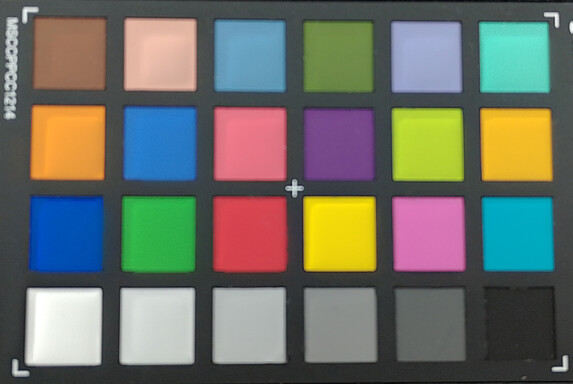
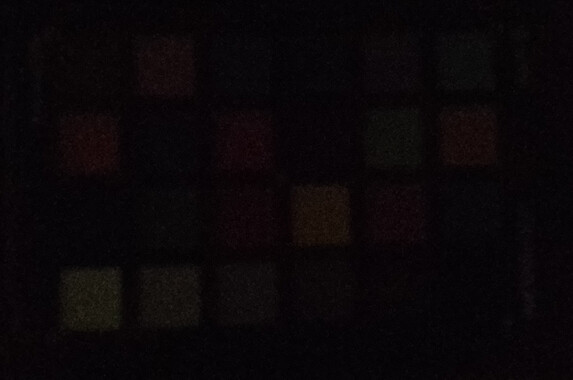
Display: 90 Hz screen for little money
An IPS screen with extended 720p resolution is class standard — only the slightly more expensive Motorola Moto G31 stands out with its Full HD AMOLED screen. However, this IPS screen in the Nokia G21 has great brightness levels achieving 484 cd/m² on average. The black value is mediocre; dark tones on the screen look more gray than black when the screen is very bright. Another special feature of the screen in the Nokia G21 is the refresh rate, which can be up to 90 Hz. Thus, scrolling feels smoother and operation is faster.
The accuracy of the color representation is mediocre and is probably too inaccurate for professional applications. We determine this in our test with the spectrophotometer and CalMAN software.
We did not notice any PWM, but the response times are quite long so demanding gamers should look elsewhere.
| |||||||||||||||||||||||||
Brightness Distribution: 86 %
Center on Battery: 492 cd/m²
Contrast: 1070:1 (Black: 0.46 cd/m²)
ΔE ColorChecker Calman: 6.02 | ∀{0.5-29.43 Ø4.78}
ΔE Greyscale Calman: 7.1 | ∀{0.09-98 Ø5}
94.9% sRGB (Calman 2D)
Gamma: 2.345
CCT: 8918 K
| Nokia G21 IPS, 1600x720, 6.5" | Xiaomi Redmi 9C IPS, 1600x720, 6.5" | Motorola Moto G31 OLED, 2400x1080, 6.4" | Samsung Galaxy A12 Exynos SM-A127F IPS LCD, 1600x720, 6.5" | Nokia G20 IPS, 1600x720, 6.5" | |
|---|---|---|---|---|---|
| Response Times | 3% | 87% | 5% | 23% | |
| Response Time Grey 50% / Grey 80% * (ms) | 64 ? | 60 ? 6% | 6 ? 91% | 58 ? 9% | 44 ? 31% |
| Response Time Black / White * (ms) | 34 ? | 34 ? -0% | 6 ? 82% | 34 ? -0% | 29 ? 15% |
| PWM Frequency (Hz) | 17120 | 223.2 | 178.6 ? | 2500 | |
| Screen | -0% | 28% | 14% | 1% | |
| Brightness middle (cd/m²) | 492 | 467 -5% | 423 -14% | 446 -9% | 485 -1% |
| Brightness (cd/m²) | 484 | 417 -14% | 425 -12% | 423 -13% | 447 -8% |
| Brightness Distribution (%) | 86 | 83 -3% | 94 9% | 88 2% | 88 2% |
| Black Level * (cd/m²) | 0.46 | 0.53 -15% | 0.29 37% | 0.44 4% | |
| Contrast (:1) | 1070 | 881 -18% | 1538 44% | 1102 3% | |
| Colorchecker dE 2000 * | 6.02 | 4.14 31% | 1.58 74% | 4.94 18% | 5.75 4% |
| Colorchecker dE 2000 max. * | 9.13 | 8.49 7% | 4.68 49% | 8.81 4% | 10.53 -15% |
| Greyscale dE 2000 * | 7.1 | 6 15% | 2.7 62% | 5.1 28% | 5.7 20% |
| Gamma | 2.345 94% | 2.291 96% | 2.219 99% | 2.145 103% | 2.095 105% |
| CCT | 8918 73% | 7536 86% | 6674 97% | 7890 82% | 8070 81% |
| Total Average (Program / Settings) | 2% /
0% | 58% /
43% | 10% /
12% | 12% /
6% |
* ... smaller is better
Display Response Times
| ↔ Response Time Black to White | ||
|---|---|---|
| 34 ms ... rise ↗ and fall ↘ combined | ↗ 17 ms rise | |
| ↘ 17 ms fall | ||
| The screen shows slow response rates in our tests and will be unsatisfactory for gamers. In comparison, all tested devices range from 0.1 (minimum) to 240 (maximum) ms. » 90 % of all devices are better. This means that the measured response time is worse than the average of all tested devices (20.2 ms). | ||
| ↔ Response Time 50% Grey to 80% Grey | ||
| 64 ms ... rise ↗ and fall ↘ combined | ↗ 31 ms rise | |
| ↘ 33 ms fall | ||
| The screen shows slow response rates in our tests and will be unsatisfactory for gamers. In comparison, all tested devices range from 0.165 (minimum) to 636 (maximum) ms. » 97 % of all devices are better. This means that the measured response time is worse than the average of all tested devices (31.6 ms). | ||
Screen Flickering / PWM (Pulse-Width Modulation)
| Screen flickering / PWM not detected | |||
In comparison: 53 % of all tested devices do not use PWM to dim the display. If PWM was detected, an average of 8121 (minimum: 5 - maximum: 343500) Hz was measured. | |||
Performance, emissions, and battery runtime: Fast SoC, but high temperatures
The Unisoc Tiger T606 is no longer the latest SoC, but it can still keep up very well with the competition. Nokia's entry-level smartphone is much faster than comparison devices in almost all benchmarks — only the more expensive Moto G31 can keep up. Thus, you get a lot of performance for your money. The system can be used without stutters in everyday use. Only more complex apps cause waiting times or stutters. The Nokia G21 is in the midfield of comparison devices in terms of graphics performance.
The high performance in the slim case takes its toll, though. We measured up to 45.9 °C as the maximum temperature at the back. Since this is a measurement at room temperature, these temperatures can rise even further on hot summer days and become unpleasant.
The small speaker on the bottom edge can get quite loud, does not distort, and the trebles are not overemphasized too much. Thus, you get a decent sound for the price. External audio devices can be connected via the 3.5 mm port and Bluetooth.
The battery life in our WLAN test is a bit shorter than Nokia G20 but is still on a very high level at 18:07 hours. The smartphone can be charged with up to an 18 W charger. It takes about two hours until the empty battery is fully charged again with the included charger.
| GFXBench | |
| on screen Aztec Ruins Normal Tier Onscreen (sort by value) | |
| Nokia G21 | |
| Xiaomi Redmi 9C | |
| Motorola Moto G31 | |
| Samsung Galaxy A12 Exynos SM-A127F | |
| Nokia G20 | |
| Average Unisoc T7200 (T606) (5.1 - 11, n=19) | |
| Average of class Smartphone (6.2 - 166, n=209, last 2 years) | |
| 1920x1080 Aztec Ruins Normal Tier Offscreen (sort by value) | |
| Nokia G21 | |
| Xiaomi Redmi 9C | |
| Motorola Moto G31 | |
| Samsung Galaxy A12 Exynos SM-A127F | |
| Nokia G20 | |
| Average Unisoc T7200 (T606) (1.9 - 5.5, n=19) | |
| Average of class Smartphone (3.4 - 367, n=209, last 2 years) | |
| on screen Aztec Ruins High Tier Onscreen (sort by value) | |
| Nokia G21 | |
| Xiaomi Redmi 9C | |
| Motorola Moto G31 | |
| Samsung Galaxy A12 Exynos SM-A127F | |
| Nokia G20 | |
| Average Unisoc T7200 (T606) (0.85 - 7.3, n=19) | |
| Average of class Smartphone (0.85 - 144, n=210, last 2 years) | |
| 2560x1440 Aztec Ruins High Tier Offscreen (sort by value) | |
| Nokia G21 | |
| Xiaomi Redmi 9C | |
| Motorola Moto G31 | |
| Samsung Galaxy A12 Exynos SM-A127F | |
| Nokia G20 | |
| Average Unisoc T7200 (T606) (0.85 - 2.1, n=19) | |
| Average of class Smartphone (1.2 - 129, n=209, last 2 years) | |
| Nokia G21 | Xiaomi Redmi 9C | Motorola Moto G31 | Samsung Galaxy A12 Exynos SM-A127F | Nokia G20 | Average 64 GB eMMC Flash | Average of class Smartphone | |
|---|---|---|---|---|---|---|---|
| AndroBench 3-5 | -11% | 35% | -15% | -23% | -14% | 609% | |
| Sequential Read 256KB (MB/s) | 257.6 | 263.1 2% | 309.8 20% | 302.3 17% | 256.1 -1% | 277 ? 8% | 2223 ? 763% |
| Sequential Write 256KB (MB/s) | 180.6 | 208.4 15% | 221.5 23% | 74.5 -59% | 139.3 -23% | 178.4 ? -1% | 1838 ? 918% |
| Random Read 4KB (MB/s) | 74 | 54.5 -26% | 84 14% | 77.8 5% | 63.5 -14% | 60.7 ? -18% | 295 ? 299% |
| Random Write 4KB (MB/s) | 60.2 | 39.7 -34% | 109.8 82% | 47.21 -22% | 27.4 -54% | 33.8 ? -44% | 335 ? 456% |
Temperature
(±) The maximum temperature on the upper side is 44 °C / 111 F, compared to the average of 35.2 °C / 95 F, ranging from 21.9 to 247 °C for the class Smartphone.
(-) The bottom heats up to a maximum of 45.9 °C / 115 F, compared to the average of 34 °C / 93 F
(+) In idle usage, the average temperature for the upper side is 29.9 °C / 86 F, compared to the device average of 32.9 °C / 91 F.
Loudspeaker
Nokia G21 audio analysis
(+) | speakers can play relatively loud (85.6 dB)
Bass 100 - 315 Hz
(-) | nearly no bass - on average 28.2% lower than median
(+) | bass is linear (6.7% delta to prev. frequency)
Mids 400 - 2000 Hz
(±) | higher mids - on average 6.9% higher than median
(±) | linearity of mids is average (11.8% delta to prev. frequency)
Highs 2 - 16 kHz
(+) | balanced highs - only 3% away from median
(+) | highs are linear (3.6% delta to prev. frequency)
Overall 100 - 16.000 Hz
(±) | linearity of overall sound is average (23.7% difference to median)
Compared to same class
» 53% of all tested devices in this class were better, 8% similar, 38% worse
» The best had a delta of 11%, average was 35%, worst was 134%
Compared to all devices tested
» 70% of all tested devices were better, 6% similar, 24% worse
» The best had a delta of 4%, average was 24%, worst was 134%
Samsung Galaxy A12 Exynos SM-A127F audio analysis
(+) | speakers can play relatively loud (86.4 dB)
Bass 100 - 315 Hz
(-) | nearly no bass - on average 28.9% lower than median
(±) | linearity of bass is average (13.6% delta to prev. frequency)
Mids 400 - 2000 Hz
(±) | higher mids - on average 5.4% higher than median
(+) | mids are linear (6.7% delta to prev. frequency)
Highs 2 - 16 kHz
(±) | higher highs - on average 6.4% higher than median
(±) | linearity of highs is average (7.4% delta to prev. frequency)
Overall 100 - 16.000 Hz
(±) | linearity of overall sound is average (25.1% difference to median)
Compared to same class
» 61% of all tested devices in this class were better, 7% similar, 32% worse
» The best had a delta of 11%, average was 35%, worst was 134%
Compared to all devices tested
» 76% of all tested devices were better, 5% similar, 19% worse
» The best had a delta of 4%, average was 24%, worst was 134%
Battery life
| Nokia G21 5050 mAh | Xiaomi Redmi 9C 5000 mAh | Motorola Moto G31 5000 mAh | Samsung Galaxy A12 Exynos SM-A127F 5000 mAh | Nokia G20 5050 mAh | Average of class Smartphone | |
|---|---|---|---|---|---|---|
| Battery Runtime | ||||||
| WiFi Websurfing (h) | 18.1 | 15.1 -17% | 17.2 -5% | 14.7 -19% | 19.8 9% | 19.2 ? 6% |
Pros
Cons
Conclusion: The Nokia G21's price-performance ratio is convincing
The Nokia G21 is a slim, pretty, and powerful phone that is also quite affordable. There is no 5G for less than 200 Euros, but you get a fast 90 Hz screen and fast Wi-Fi 5. The manufacturer also promises long software updates and a decent camera.
The high temperatures under load are a nuisance, as is the low number of 4G frequencies. This should be sufficient for home use but can quickly become an obstacle for surfing while travelling abroad.
With the G21, Nokia has put together a good overall package thanks to a bright screen and fast SoC, which is available at a low price.
Those who prefer an AMOLED screen and higher performance are better served by the Motorola Moto G31. If you want a smartphone with less heat, you can consider the Xiaomi Redmi 9C. However, it cannot keep up with our test device in terms of performance.
Price and availability
The Nokia G21 with 128 GB storage is currently only available directly from the manufacturer https://www.nokia.com/phones/de_de/nokia-g-21?sku=719901183921for about 190 Euros. The 64 GB version is available from various online retailers for 170 Euros. Our partners amazon.de, notebooksbilliger.de and Cyberport also list the Nokia G21.
Nokia G21
- 03/06/2022 v7 (old)
Florian Schmitt




